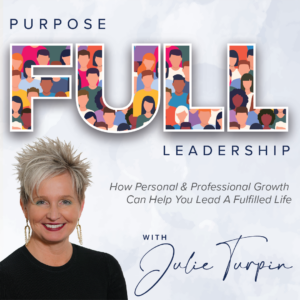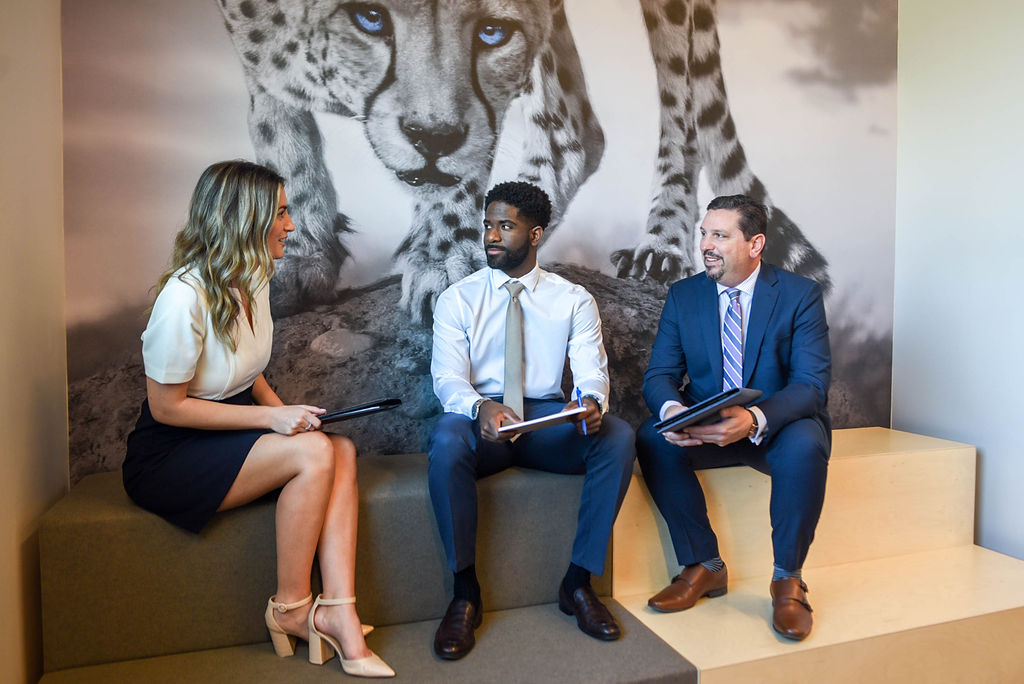Finding the Courage to Soar
by Julie Turpin, Chief People Officer at Brown & Brown Insurance
Fear, anxiety and doubt, oh my!
This year’s Brown & Brown Women in Sales Summit theme was “Soaring to New Heights.” We focused on building our flight plans for success and preparing for our professional and personal journeys.
In my keynote speech, you may have expected me to cover the traditional components of a career flight plan — goal setting, education and training, mentorship, skill development and leadership plays. Instead, I focused on what many of us take for granted: the self-work and courage it takes to prepare for strategic thinking, networking and growth.
When was the last time you were brave? I bet it was more recent than you think.
There is a misconception that only grand or dramatic acts count as brave and that we must overcome some great fear or challenge to demonstrate courage. In my life, these moments of great fear included going bankrupt and worrying about where our next meal would come from, divorcing after 19 years of marriage and figuring out how to take care of myself. But this limited viewpoint would disregard my public speaking, learning improv and even taking on each new role offered to me. Courage comes in all shapes and sizes.
Fear, anxiety and doubt are the greatest roadblocks to all we want to achieve in life. They can impact how we show up for ourselves and others and keep us from being authentic and vulnerable peers and leaders. If we are not careful, these thoughts can keep us from living meaningful and fulfilling lives.
For this reason, I recommend including habits and activities that build your confidence and courage in your career flight plan.
The role of self-worth in courage
Courage is not the absence of fear because there must be fear for us to demonstrate courage. Instead, it is having self-belief strong enough to confront the fear head-on.
At the core of self-belief is self-worth. When we value ourselves, we are more likely to take risks and face fears because we believe we are capable and deserving of success. A strong sense of self-worth encourages resilience, allowing us to recover from setbacks and continue pursuing our goals despite obstacles. This resilience is a key component of courage, as it involves not just facing fear but persisting in the face of adversity.
A powerful tool to nurture self-worth is self-talk. Self-talk is the continuous internal dialogue that shapes our perception of ourselves and the world around us. When our self-talk is negative, our self-worth suffers because the brain tends to believe what it hears repeatedly.
We can actively reprogram our subconscious minds by consciously choosing to replace negative thoughts with positive affirmations. This isn’t just about positive thinking for the sake of it; it’s about creating an intentional internal narrative that empowers us.
The power of changing perspectives
Courage is within each of us. The trick is knowing how to unlock yours. I use a special meditation practice called “Get on Your Bird Meditation,” developed by Colette Baron-Reid, to navigate new or uncomfortable experiences. Let me walk you through it step by step.
1. Think about something you are stressed about.
2. Select three words describing your feelings about that situation.
3. If the three words were an environment, what would it look like? Describe the place that comes up in your imagination.
4. Now ask yourself, are you the place or the one looking at the place?
5. Now imagine leaving this place. Where would you go?
6. Imagine a winged creature shows up to take you somewhere else. You decide what type of creature this is. Simply notice the creature.
7. Then, it invites you to get on its back. Make sure you are comfortable.
8. The creature is going to take you high into the sky, away from this place. Flying away feels so amazing.
9. Now, look over the creature’s side and take in the place you’ve just left. Notice its size from way up above. Does it look different? Can you even see its details anymore? What do you see beyond it?
10. What new possibilities are open to you from this new vantage point?
A change in perspective welcomes curiosity versus fear. When we feel stuck or overwhelmed, it’s often because we are too close to the problem and unable to see beyond its immediate confines. By visualizing ourselves rising above our challenges, we can gain a clearer, broader view and recognize that there are always new paths to explore and opportunities to seize.
This practice encourages you to detach from the immediate stress and view your situation with fresh eyes. It helps you realize that the obstacles that once seemed insurmountable are just small parts of a much larger, richer landscape. From this elevated perspective, solutions and creative ideas become more accessible, and your courage to act on them grows stronger.
The road to success might be paved with new skills, training and promotions, but we must remember that it takes courage to face the “creatures” that might surprise you along the way.
For more content, check out last year’s Women in Sales keynote follow-up, “The Power of Gifts.”

PurposeFULL Leadership
How Personal & Professional Growth Can Help You Lead A Fullfilled Life
by Julie Turpin, Chief People Officer at Brown & Brown Insurance
Subscribe to Julie’s PurposeFULL Leadership and view this blog on LinkedIn here.








